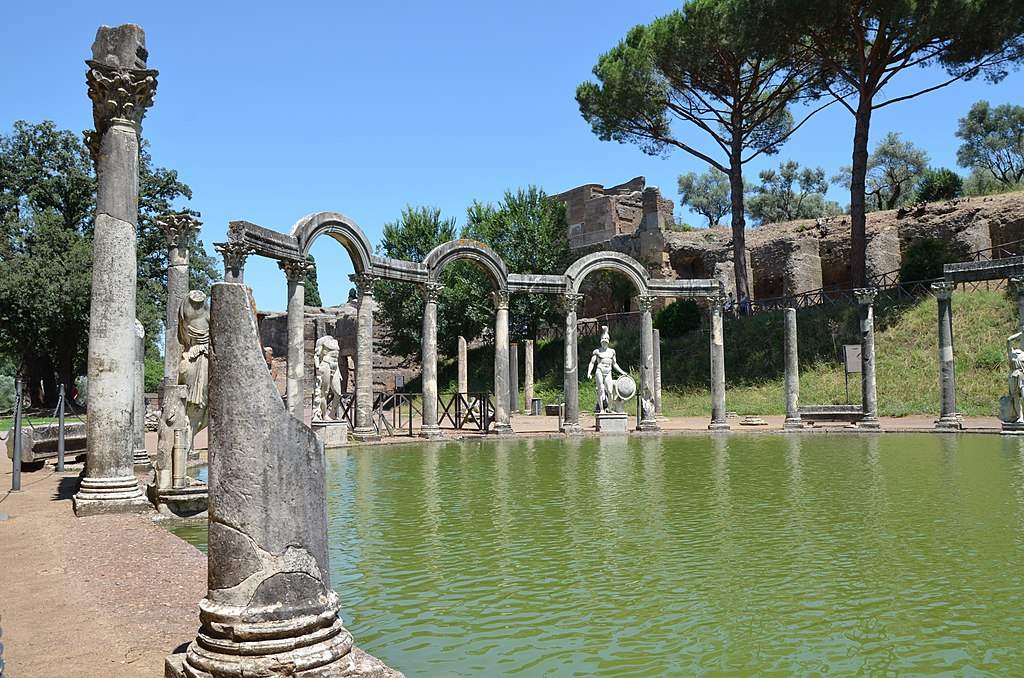Villa Adriana in Tivoli, the sumptuous mansion of Emperor Hadrian built between 118 and 138 AD and now among the most visited sites in Lazio (231,000 visitors in 2019), reopened to the public last May 28 after being closed due to coronavirus, but it seems not to have solved some of the problems that visitors have been pointing fingers at for some time. Indeed, reading the reviews on Tripadvisor written by users in the month of August 2020 alone, it seems that the situation in the post-lockdown reopening is not really rosy, at least for many visitors.
Sure, the reviews are mostly positive since many visitors remain satisfied with what they see, but often even the most satisfied ones do not fail to point out what is wrong. For example, the most recent review, by user FraRoc_57 (a Tripadvisor veteran, with 170 contributions), gives a rating of four points (out of five), pointing out, however, that, due to Covid, some walkways are interdicted, but not only that: the route is “not very signposted,” audioguides are not available, and in general there are complaints about the lack of organization. Another review, immediately following, says “not excellent rating because the directions are minimal and there is no staff around that can be contacted for any information, needs, etc.” And again, third review in a row, more problems: “there is a lack of clear and comprehensive signage of the various areas,” writes Jennifer C. (33 submissions), “they should equip those who enter with explanatory brochures and map of the archaeological site or even better audio guides, because the visit is difficult and not very productive as you do not fully understand what you are looking at.”
Then there are those who recommend a cover in front of the ticket office because “standing in line under the scorching sun was not pleasant,” but in general the main problem seems to be the absence of guides or maps: “2000 years of history,” writes a user from Turin, “could also be told on its own, but an audio guide, an app, a simple map would definitely help without resorting to the last resort of downloading guides from the Internet.” Daniele Dimartino gives the highest score to Villa Adriana, but points out that “there is no possibility to buy entrance tickets online and in the site there are no timetables for guided tours... within the site few information panels.”
In some cases, even low-scoring reviews flourish: “true that we are in Covid period,” says Alex from Turin, “but the villa is all outdoors: it would not be so difficult to organize guided tours during the day (as happens in other places in Italy). The panels are there but written like dictionaries. There is an exhibition area with a model but only partially accessible. In short, there is no possibility of visiting this archaeological site coming out with a sense of what you have seen, unless you have done individual research as I did. So art dies because of the inexperience of those who do not care to transmit it, even to those who intend to know it.” Gian Marco from Rome even defines his experience as hallucinating and lists everything that in his opinion does not work: “entrance without body temperature detection” (although then in reality the measurement was arranged), “no paper support that could be used to describe the various areas, service personnel who drive around in golf cars smoking and throwing cigarette butts on the ground, faded and consequently illegible signs, signs placed in areas forbidden to the public.”
However, there is no shortage of users who point out the good points: the museum guides of Hadrian’s Villa, on which there is unanimous appreciation, the practicality of paid parking, and the unfailing “beauty” of the site that, in some cases, makes one forget the shortcomings. Which, however, there are and they do not seem few: weighing in particular (even scrolling through the reviews of July and the past weeks) are the absence of maps with which visitors can find their way around, the lack of clarity of information, the impossibility of making use of an audio guide, the difficulty of the procedure for purchasing tickets online (which can be bought only from the Coop Culture site, but on the Villa Adriana site there are no cross-references to online purchase on the concessionaire’s site). In addition, the Villa Adriana site itself is also not up to date, mixing parts in Italian with parts in English, and is unclear.
It is a little better at Villa d’Este (which after the Franceschini reform is part, together with Villa Adriana, of a single autonomous museum institute): the reviews here are mostly positive, although in a few cases there are grievances (mainly about the maintenance of the greenery). And there remains, even for Villa d’Este, the problem of the website, which is also not very modern, placed at the same address as that of Villa Adriana, which bears the name of the latter (villaadriana.beniculturali.it), with the result that, if a user searches for “Villa d’Este” on Google, he or she runs the risk of coming across sites that have nothing to do with the Renaissance building. In short, will the “Villae” be able to better satisfy their audience?
Pictured is the canopus of Hadrian’s Villa. Ph. Credit Carole Raddato
 |
| Hadrian's Villa in Tivoli, strong rebukes from visitors to site management |
Warning: the translation into English of the original Italian article was created using automatic tools. We undertake to review all articles, but we do not guarantee the total absence of inaccuracies in the translation due to the program. You can find the original by clicking on the ITA button. If you find any mistake,please contact us.